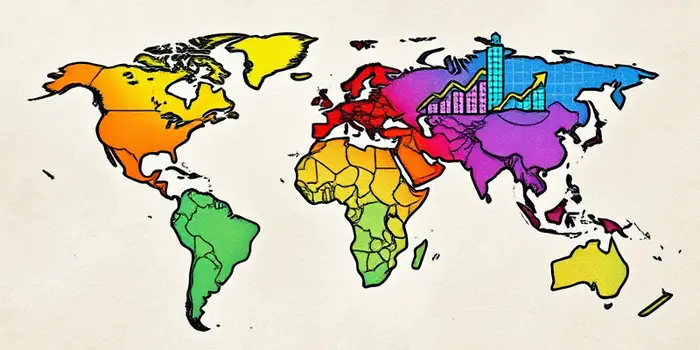
As we move into mid-2025, forecasters around the world are sounding a note of caution: global growth is set to decelerate from the robust expansion seen last year. Morgan Stanley now projects world GDP growth of 2.9% in 2025, down from 3.3% in 2024, with only a slight dip to 2.8% in 2026. The World Bank’s outlook is even more subdued, anticipating just 2.3% in 2025—the weakest non-crisis performance since 2008. Against this backdrop of slowing momentum, businesses, policymakers, and households face a critical question: how best to navigate an environment of moderated expansion, still-evolving inflation, and complex geopolitical headwinds?
In this article, we explore the key drivers shaping the global economy over the next two years, analyze regional divergences, and highlight the policy choices and risk factors that could determine whether the world slips into recession or manages to sustain a soft landing.
Most major economies are on track for a notable deceleration. The United States is expected to slow from 2.8% growth in 2024 to 1.6% in 2025 and 1.5% in 2026. This moderation stems from tighter financial conditions and higher tariffs, combined with elevated policy uncertainty. In China, growth is forecast to ease from 5.0% this year to 4.7% in 2025 and 4.3% in 2026, as the post-pandemic rebound loses steam and structural challenges persist.
Europe’s recovery remains fragile. The euro area may edge up from just 0.8% growth in 2024 to 1.0% in 2025 and 1.2% in 2026, reflecting a low starting point and cautious consumer sentiment. Meanwhile, emerging markets outside China are cooling from 3.4% in 2024 to 3.0% in 2025, weighed down by slower Chinese demand and volatile capital flows.
After peaking in 2022 and 2023, inflation rates are beginning to moderate—but at different paces across regions. Morgan Stanley anticipates global inflation will slow to 2.1% in 2025 and 2.0% in 2026, while G20 countries may see consumer price increases ease from 6.2% this year to 3.6% in 2025 and 3.2% in 2026. In the euro area, inflation could fall to around 2.1% in 2025 and dip below 2% the following year, approaching central bank targets.
However, the Federal Reserve is expected to remain an outlier, holding rates steady into early 2026 to ensure price pressures are fully subdued. Most emerging market central banks may embark on cautious monetary easing amid weaker demand, though they will need to balance rate cuts against exchange rate stability and financial sector health.
Governments worldwide have been expanding budgets to support growth, fund infrastructure, and bolster defense. The United States, the euro area, and China are all running wider deficits, with the U.S. deficit swelling due to higher interest payments and increased social spending. In the European Union, aggregate deficits may hover around -3% of GDP through 2026, while Germany’s shortfall is set to reach its highest level since reunification.
This trend reflects expansionary fiscal support measures driving deficits, but it also raises questions about long-term sustainability. As borrowing costs climb from historic lows, maintaining large stimulus packages becomes more expensive, potentially crowding out private investment and creating future fiscal headwinds.
Trade tensions remain a critical uncertainty. Recent U.S. tariff measures have inflicted a structural shock on global supply chains, and even a partial rollback would not fully restore prior trade dynamics. A renewed escalation could tip the world into recession.
With easing inflation pressures and peaking rates on the horizon, policymakers have an opportunity to fine-tune strategies for growth. Central banks must carefully calibrate rate cuts to support activity without reigniting price pressures. Fiscal authorities should prioritize high-multiplier investments—such as green infrastructure and digital connectivity—that bolster long-term productivity.
Businesses and investors can prepare by stress-testing plans against a range of scenarios, from benign slowdowns to sharper downturns triggered by external shocks. Strengthening balance sheets, diversifying supply chains, and maintaining liquidity buffers will be crucial.
Finally, international cooperation on trade and regulatory issues can mitigate fragmentation risks. By fostering open dialogue and reducing tariff barriers, governments can help preserve global trade flows and avoid self-inflicted damage.
Though the outlook is challenging, there are pathways to resilience and renewal. By combining prudent macroeconomic policies with forward-looking investments and robust risk management, economies can weather the slowdown and lay the groundwork for sustainable growth in the years to come.
References













